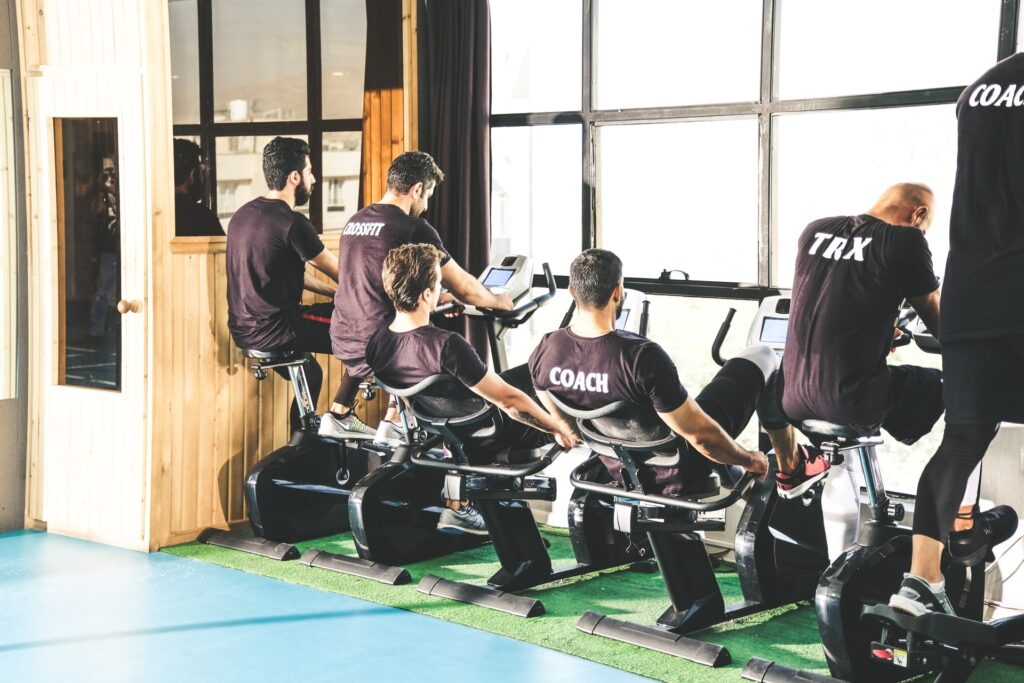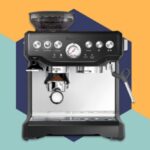The leg press is a popular piece of gym equipment for developing essential leg muscles. Leg press machines are widely found at gyms in two varieties: the normal horizontal leg press and the 45-degree leg press, which has a seat that reclines at an angle as your legs press upward in a diagonal motion.
Both machines are used to strengthen the quadriceps, hamstrings, and gluteus maximus of the thigh (buttocks). While it may appear to be an easy activity, it is critical to understand how to utilize it correctly. By paying attention to your technique, you may optimize the advantages of strength training while avoiding injury. The leg press is used into a leg strengthening exercise or a machine circuit.

The Advantages of Using a Leg Press Machine
“The leg press is an excellent equipment for building glutes, hamstrings, quads, and even calf muscles,” explains Khalfe. He claims that the machine is typically safe for novices who are new to (or scared by) free-weight workouts because of its regulated movement pattern. Because you don’t require a spotter, it’s also a good option for solo leg days; just be sure to utilize the safety bars on the incline leg press to protect the weight from sliding down on you if you overestimate your ability to lift or your foot slips.
Furthermore, because the leg press isolates the lower body, it is an excellent choice for persons with back or shoulder issues who wish to strengthen their legs. Khalfe adds that you may even complete repetitions with just one leg to concentrate on single-leg strength without having to worry about balance. (Plus all the additional advantages of weight lifting.)
The Two Types of Leg Press Machines
Leg Incline Press
You sit on a low, reclined seat with your feet pressed up against a raised platform on the incline leg press machine. You may modify the resistance by adding weight plates to the platform, making it more difficult to push the platform up and away from you. According to Adeeb Khalfe, D.P.T., C.S.C.S., creator of Movement Evolution in Dallas, “with an incline leg press, you push against gravity, which simulates practical, machine-free motions you perform in the real world.”
According to Khalfe, one big advantage of the incline leg press is that it allows you to add a lot of weight, making it a terrific tool for more skilled exercisers.However, because your body is below the weight, the incline leg press places additional strain on your spine, increasing your chance of injury if you don’t utilize the machine correctly. (Not to mention the difficulty of loading and unloading plates from the machine.)
The Cable Leg Press Horizontal
The horizontal cable leg press requires you to sit with your feet against a platform that is the same height as your torso. This sort of leg press usually has a cable-rigged weight stack that allows you to simply pick your desired weight without having to get out of your seat.
According to Khalfe, the horizontal leg press offers less functional value than the incline since you’re pushing against the resistance you’ve chosen on the machine’s pulley system (rather than gravity). However, he claims that this sort of leg press machine is less scary for novices and allows you to make weight changes — albeit with fewer possibilities — more rapidly than the incline machine.
How to Use the Leg Press Machine?
When using a leg press machine, your body should be in a specific position. Sit on the machine with your back and head securely supported by the cushioned support. Place your feet on the footplate about hip-width apart, with your heels flat.
Instead of being lifted, your bottom should be flat against the seat. At the knees, your legs should make a 90-degree angle. If your feet are too high on the plate, it will put strain on your glutes; if they are too low, it will put strain on your knees. Your knees should be parallel to your feet and not bent inward or outward.
Keep this alignment in mind while you press. Grasp the help handles for support and to maintain your spine and head in place.
- Brace your core muscles and use your heels and forefoot to push the platform away. Your heels should be flat on the footplate at all times. The front of your foot or your toes should never be utilized to propel the pad forward.
- Exhale and stretch your legs while keeping your head and back flat on the seat pad. Extend with steady control rather than a quick movement.
- At the height of the movement, pause. Make sure your knees are not locked out and that they are not bowing out or in.
- Return the footplate to the beginning position by gently bending the knees while breathing. Maintain a flat back and feet throughout.
- If you’ve never done leg presses before, start slowly with three sets of ten. You can go from there as your strength grows.
Common Mistakes of Using the Leg Press Machine
To get the most out of your leg press practice, it is critical to maintain good technique. Avoid the following mistakes when doing the leg press.
Excessive Weight
One of the most important aspects is to avoid lifting more weight than you should. If you can’t control your motions, you should lessen the weights. The amount of weight you lift is less crucial than proper form.
While the exercise should be difficult, it should also be done with total control. Never speed through an exercise or allow your legs to collapse at the finish.
Buttocks are not flat against the seat.
Your legs are at an incorrect angle if your buttocks are elevated off the seat. You must adjust the seatback until your knees and buttocks are in a comfortable position. Poor placement is noticeable when you feel constricted and/or your knees appear to be right in front of your eyes.
Hands-on the Knees
Hands-on the knees is a typical error that will ruin your form. Instead, grab the assist handles.
Limited Range of Motion
Always go through the whole range of motion without elevating your hips. Adjust the seat and/or decrease your weights as needed.
Raising Head
Raising the Head Pay attention to the position of your head. It should be stable and snug against the seatback. You are utilizing too much weight if you jolt your head forward.
Breathing
Remember to breathe during the exertion period and avoid holding your breath. Your breathing will ultimately become automatic if you focus on expelling on effort and inhaling on release.
How to Get the Most Out of Your Leg Press Machine
Adjusting your foot placement (aka stride width and foot height) on the leg press machine can change the muscles the technique focuses. While the neutral, shoulders-width stance stimulates your glutes and leg muscles fairly evenly, a broader sumo stance (with feet pointing slightly out) activates your inner upper thighs and quads more, while a narrow stance activates your outer quads more, according to Khalfe.
The height of your feet on the platform also influences the focus: According to Khalfe, a high foot position emphasizes your hamstrings and glutes, whilst a low foot position emphasizes your quadriceps.
Precautions and Safety
If you have weak pelvic floor muscles, avoid the leg press since it puts a lot of strain on them. Instead, follow your doctor’s or physical therapist’s advice and perform safer leg strengthening activities. If you have a knee injury, you should not use this equipment.
If one or both of your knees hurt, don’t push yourself. Pushing through will result in harm. This exercise can also put strain on your back, so avoid it if you have a back ailment or pain.











